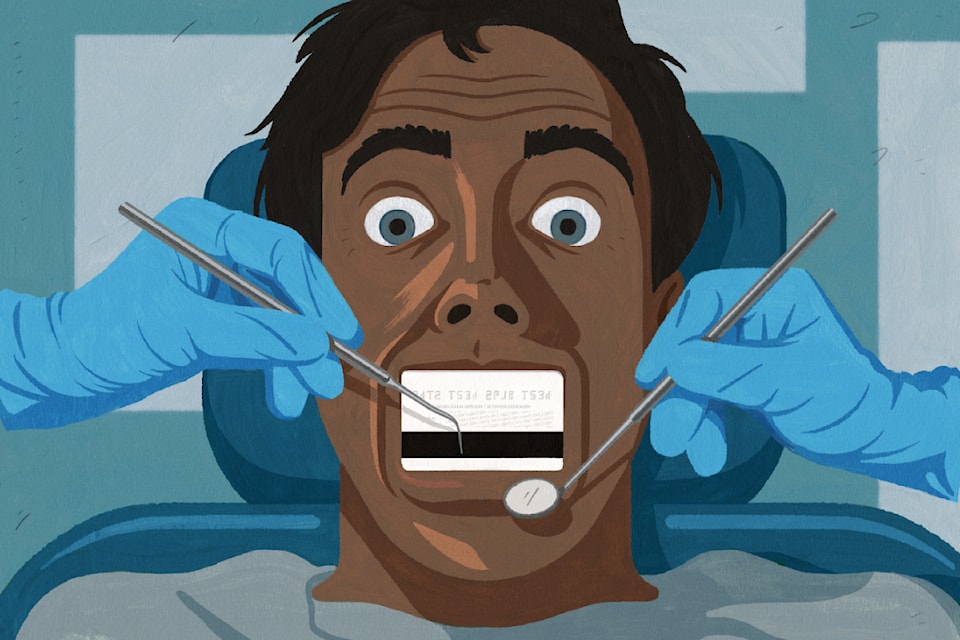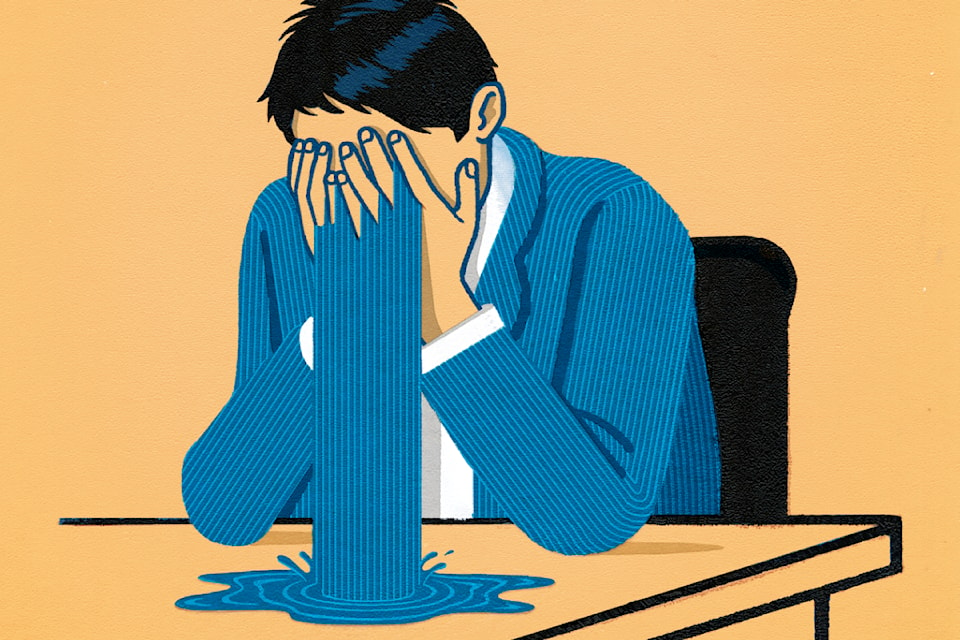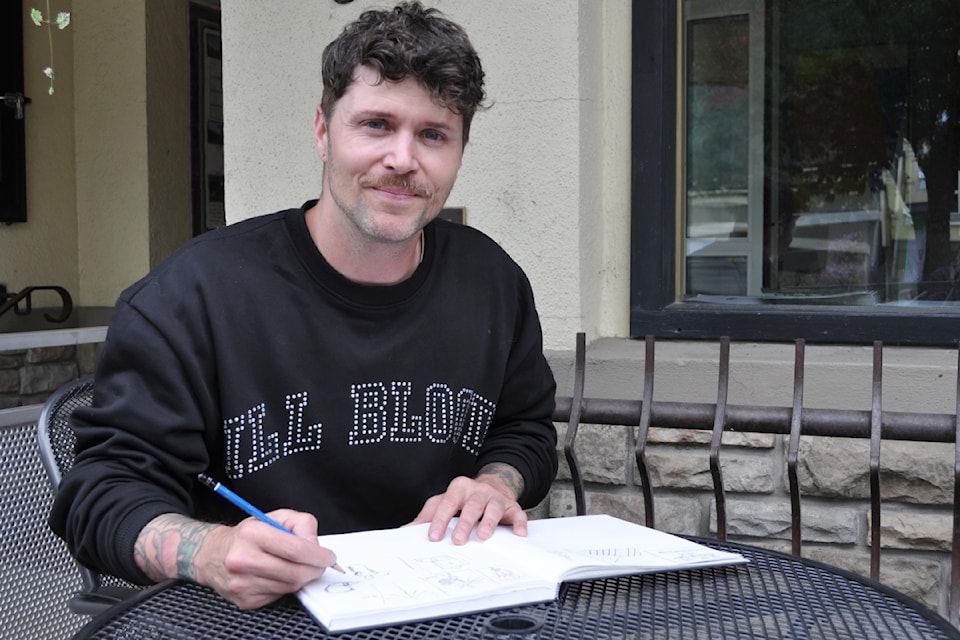Shy teens cradling sketchbooks take their seats around Pete Ryan, who directs them to each grab a small stack of square papers.
On the top square, he tells them to write a sentence describing something simple or absurd. Pass the stack to your left. The next person has to read the sentence, then take a few minutes to draw what they just read. The stack is again passed, and another person writes a sentence describing the drawing.
Repeat until every piece of paper has words or drawings on it, then see how the words and pictures evolved from the original sentence. It's the telephone game for artists.
As the exercise progresses, the quiet group surrounding Ryan begin to open up. They laugh at each other's drawings, apologizing for each sentence and scribble shared. By the end, there's pictures of unicorns flying over rainbows, fish playing trumpets, and elephants multiplying by the thousands.
“Everyone’s going to make bad drawings," Ryan tells the students, who were learning from him during a summer camp in Nelson for aspiring artists. "Sometimes it comes down to just what you’re given to draw. … All you can do is the best you can with the subject matter you’re given."
Ryan has made a career of drawing fast, and doing the best with what he can, for some of the most popular magazines in the world.
You've likely seen Ryan's work without realizing it was his. The Nelson-based illustrator has created images for publications including The New York Times, The Walrus, and Time Magazine.
Illustration has been a key element of newspapers and magazines since the early 19th century when London papers began using wood engravings to add images onto pages. But even after photography was introduced in 1848, illustration endured. The New Yorker, currently celebrating its 100th anniversary, continues to run the work of artists on its cover every week. Every major newspaper and magazine still publishes stories with illustrations both in print and online (where the art is also occasionally animated).

Ryan is a lifelong fan of this art genre. He speaks with adoration for his influences, such as legendary illustrators such as Charley Harper, Norman Rockwell and Brian Cronin. Among Ryan's prized possessions is a pristine issue of The Saturday Evening Post printed in 1933.
Seventeen years ago, Ryan got his start in the industry working as a graphic designer for the Air Canada magazine enRoute. The Montreal office was home to several other magazines, so Ryan began sharing his portfolio and building what has now become a busy freelance career.
Whenever he is assigned a piece, Ryan's goal is to support the writing. The art should compliment the story, not vice versa.
“There's so much trust in allowing me to visualize what's essentially already done. The hard work's already done, the writing. I’m the razzle dazzle that somebody looks at for three seconds and decides, 'OK, well, I'll read the first paragraph, and if that hooks me, I'll read the first half.' But the writing is the important bit.”
His art is usually completed on tight deadlines. A recent cover for The Economist was assigned to him July 22 for a story titled "The economics of superintelligence." By the end of the day he had a concept approved, and finished the piece the next day. Just two days after it was assigned, The Economist used Ryan's depiction of American inventor Benjamin Franklin's face contorting to super speeds as the top image on its website as well as for the print edition's cover that week.
This is how Ryan prefers to work. He typically has three or four assignments underway, starting his day at 7 a.m. and working until 10 at night. (On the weeks he was teaching the camp, Ryan said he was working until about one or two in the morning. A little frazzled, he admitted he should have left some space in his schedule.)
But the journey from concept to finished piece can be, in Ryan's words, excruciating.
Each of Ryan's images hinge on a metaphor he creates to connect the reader to the accompanying story. For a Washington Post story about the turning left on the road, Ryan drew a circle of vehicles crashing into each other. A piece for Politico, about how airplanes cause sleep disturbances, shows an airport runway worker directing traffic from bed. In another for This American Life, a basketball player is blocked by his own shadow for a story about self doubt.
“Every assignment needs something that's universal so that every single person can understand it, but it needs to have a little visual twist for that person. The universal bit is the on-ramp for the audience, and then the twist is my way of subverting their expectation on what they're going to see.”
Finding that twist is difficult. Ryan keeps a collection of about 90 sketchbooks. On each page he scribbles down 10-15 ideas, and a single assignment might use five or six pages.
Ben Shmulevitch, cover art director for The Economist, said the magazine typically has a roster of 50-100 illustrators who generate 20-25 pieces for the weekly publication. Many might send three or four ideas for a piece. Ryan sends up to 10 concepts, some he prefers over others and a number of which he knows are no good but might lead to an inspired idea.
“What Pete offers is kind of gold dust because he thinks about things in visual ways that are surprising," said Shmulevitch. "It’s one of those things where you’re like, how did I not think of that or how did I not see that, because he manages to do that with all manner of subject matter, even when it’s quite dry.”
For a story on black bear hunting in an upcoming issue of ON Nature, Ryan considered everything he knew about the animals. After five hours of workshopping, he remembered the story of Goldilocks and landed on a concept of three bears at a dinner table. The finished piece, first painted on canvas then edited in Photoshop to look like it came from a storybook, depicts three bear heads hung on a wall over bowls at a dinner table.
He was pleased with the final image and decided it was one of the best he's done this year. He also immediately began to fret about the next job.
In conversation, Ryan's eyes light up when he talks about his influences and contemporaries. But when the topic turns to his own art, Ryan describes himself as a tradesperson rather than a quote-unquote real artist. He appreciates that readers may only look at his work for a moment before moving on.
“I always think I'm just a fraud. Every single good piece feels like an accident, like I don't know how I got there. I don't know how I got the idea.”
Ryan is no fraud. He's won three medals from the prestigious Society of Illustrators, and his success is not a surprise to colleague and friend Chris Gash.
Gash, a New York-based illustrator with 25 years of experience, says most artists who make their career in illustration typically burn out on the workload or only take assignments as side gigs. Prolific artists such as Ryan, who estimates he completes over 200 pieces per year, are invaluable contributors to editors who aren't sure what visual might fit their story.
"I think working in a conceptual style means that you are solving the problem of the job first, and then you're finishing it the way you draw, but that's almost second to really the thing that they're calling for, which is a solution to a problem that they have.”
Elements of nature are common in Ryan's art. The silhouette of a deer leaps from a road sign to an overpass, a flock of birds emerge from a single egg, divers explore an underwater cave. Ryan grew up on a farm in rural Ontario, and in Nelson, he makes outdoor activities a priority.
“He has this sort of reverence for nature and he's out in it and now lives in it, and it shows that is really part of his daily visual experience," says Gash. "It's not a gift that I have and I really have to work at it. He makes it look so organic and it looks so good every time. I burn with jealousy.”

As talented as he is, Ryan doesn't believe he will retire as an illustrator. He'll be out of work long before that happens.
More publications he's noticed are turning to artificial intelligence generation for their images. It's cheaper than hiring an illustrator, even if the quality of art is often suspect (the word 'slop' is the internet's favourite description for AI art).
Ryan isn't a doomer about AI, but he is a realist. He's convinced image generators such as Midjourney will be the premature end of his career.
If that happens, Ryan says he will keep drawing but for reasons that aren't necessarily about earning a paycheque. During his summer camp, one of Ryan's goals was to encourage his students to draw simply for the joy of drawing.
Art for art's sake gets lost in the daily grind of commercial illustrations. Ryan feels fortunate for his career, but in creating images for the world he wonders if one day he'll be capable of drawing just for himself.
“I hope there is a way back. I hope that this isn't a relationship that is gone when I finally come out of this. I hope that it's waiting for me. It would be pretty cool.”



